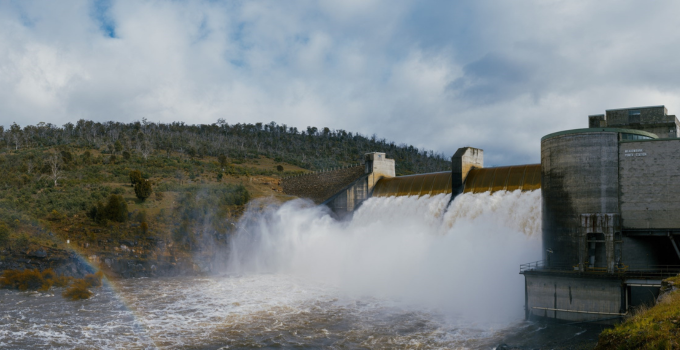THOUGHT LEADERSHIP
From feasibility to operations: how technical due diligence can empower renewable energy investment
Confident investment in renewable energy projects is the key to accelerating the clean energy transition. Yet every renewable energy project carries some uncertainties at every stage, from early feasibility to long-term operations.
For all involved – developers and contractors, investors and lenders, stakeholders and communities – trust in a project’s viability and success will grow when there is a strong framework in place to thoroughly assess and quantify the project’s technical and financial assumptions, risks and unknowns.

Robust technical due diligence needs to span all the stages of the project’s development, though its focus will change as the project evolves.
Here we examine how sound technical due diligence, applied throughout the lifecycle of a renewable energy project, can provide a strong foundation for sustainable delivery and greater confidence of a bankable investment.
Due diligence is an ongoing process
Technical due diligence of renewable energy projects (including wind, solar or hydropower) isn’t a one-off activity. It evolves as a project advances.
The aim in the early stage is to verify the design assumptions and to determine if a concept can evolve into a viable investment.
During execution (construction), the emphasis shifts to project monitoring and adaptive risk management, ensuring that construction progress aligns with budgeted milestones.
Once operational, the focus is on assessing the project’s outputs (energy generation, efficiency, etc.) and maintenance practices while also ensuring contractual integrity, which is critical for refinancing or acquisition decisions.
Together, these different phases of due diligence form a continuum of technical supervision which ultimately helps to support the long-term success of the project.
Pre-construction phase
Pre-construction due diligence is a multidisciplinary process that assesses site conditions, verifies design feasibility, and validates operational feasibility. This leads to more realistic financial projections, which in turn enable objective and systematic investment decisions.
Key elements of pre-construction due diligence typically include review or assessment of the following:
– environmental approval status and consent conditions
– geological and geotechnical studies
– hydrology and hydraulic components (hydropower)
– mechanical and electrical equipment
– power evacuation and grid connection
– constructability and logistics
– unit rates and project costs
– pre-construction risk assessment
Execution phase (construction)
Once a project secures financing and enters the construction phase, the technical due diligence focus moves to active oversight of whether the project is being delivered safely, efficiently and to the required standard. The consultant helps the project achieve timely outcomes during construction and commissioning. The key elements of technical supervision during construction include the following:
– ongoing design reviews
– initial review of the execution plan
– construction quality monitoring
– construction progress monitoring
– updated risk assessments
– assurance of adherence to standards
– identification of opportunities for continuous improvement
– milestone reporting
These assessments help to identify deviations from plans, enhance transparency and reinforce investor confidence.
Operational phase (existing assets)
For businesses considering investing in or acquiring operational assets, due diligence helps to assess how the asset is performing, verify the asset’s physical condition, and identify improvements that can sustain value into the future. This is essential for establishing accurate valuations and identifying hidden risks. A competent technical consultant can offer tailored services that combine desktop reviews with on-site inspections to inform the investment decision.
Key components of due diligence of existing assets include the following:
– review of condition of plant and equipment
– performance review
– review of O&M
– hydrological assessment (hydropower)
– risk identification
This stage of due diligence is especially relevant in a secondary market, where investors are seeking to invest in brownfield assets to diversify their portfolios. The goal is to ensure that the asset’s operational reality matches its financial promise.
Building confidence from concept to operation
Entura has seen firsthand how due diligence strengthens projects at every stage. We’ve fulfilled many technical due diligence and advisory roles in different contexts – and sometimes multiple roles on a single project.
For continuity, a single consultancy can take on a range of responsibilities across the different phases of a project: whether that’s technical feasibility assessment, technical due diligence, Owner’s or Lender’s Engineer roles, or Independent Technical Advisor. These roles are different in focus, timing and perspective, but they’re ultimately all about building confidence in the viability and success of the project.
One example is the Kidston Pumped Storage Project (K2-Hydro), for which Entura initially prepared the technical feasibility assessment considering factors that influence the project’s technical and commercial viability, and then played an advisory role leading to financial close. During the construction phase, our role shifted to that of Owner’s Engineer, helping to ensure the project’s designs meet current practice and that construction is implemented in accordance with the designs and specifications.
In the pre-construction stage, Entura has completed technical due diligence of many hydropower and other renewable energy projects. For example, we’ve recently taken on this role for several hydropower projects planned for development in India, ranging from a 32 MW hydropower project right through to an 1800 MW pumped storage project. These assessments included hydrological studies, power potential studies and reviews of project layout, plant design and electro-mechanical works, power evacuation arrangements, power purchase agreements, technical risks, costs and construction schedule, and more.
We’ve also conducted due diligence for many solar, wind and hybrid renewable energy projects. For example, Entura was engaged as the technical due diligence consultant for the 112 MW Granville Harbour Wind Farm to support the client’s financial closure. We provided technical services including energy estimates, review of permits and grid connection, development of technical specifications, review of the project design, and checks of environmental compliance– all necessary for successful financial closure.
We continued our involvement into the construction stage as Owner’s Engineer, providing construction support, overseeing the civil and geotechnical components of construction, and conducting regular site inspections to ensure the works were undertaken in accordance with the relevant industry and safety standards.
Translating technical findings into financial indicators
Technical due diligence at every stage of a project’s lifecycle requires a level of rigour that goes beyond a simple compliance requirement. It is fundamental to long-term asset performance, stakeholder trust and the validity of financial assumptions and projections. Consultants involved through the feasibility, construction and operational phases can contribute meaningfully to the project development.
Although financial modelling lies outside a technical consultant’s scope, their work forms the backbone for credible financial analysis and investment decisions that are integral to the overall business case development. Each finding from the technical process can be used to support further financial due diligence to inform investment, lending or acquisition decisions.
By structuring the technical findings around the following four financial pillars, technical due diligence becomes a bridge between the on-the-ground realities of the project and its ultimate financial viability.
Capital and operational expenditure
Energy production and revenue estimates
Financing arrangements
Financial appraisal parameters
What does this mean for stakeholders?
Sound technical due diligence can cater to the financial expectations of different stakeholders making it a key instrument for strategic decision support.
- Long-term investors (developers or buyers) prioritise clarity on returns, dividend sustainability, and resilience of the asset into the future. Their confidence hinges on realistic operation plans, reliable energy forecasts, and durable O&M strategies derived from feasibility assessments and construction-phase monitoring.
- Debt providers focus on debt-service coverage ratios (DSCR) which indicate the capacity of the project to generate sufficient revenue to repay loans. Lenders will want reassurance about budget contingencies, capability of contractors and robustness of project schedules – all of which are assessed in detail during the due diligence.
- Insurers require information about structural failure modes, the risks of operational outage, and force-majeure conditions. These can be informed by detailed technical analyses and condition assessments from operational audits.
When applied consistently throughout the course of a project, from feasibility to operations, technical due diligence helps all stakeholders measure project risks, avoid unexpected costs, and evaluate potential and actual performance. This is the bedrock for confident financial decisions – and ultimately, for driving the energy transition forward at the scale and pace our environment and communities urgently need.
ABOUT THE AUTHOR
Sagar Shiwakoti is a civil engineer with master’s degree in water resources engineering and close to a decade of experience in flood studies (hydrological and hydraulic assessment) and hydraulic design for hydropower projects. Prior to joining Entura in 2022, he worked with the Nepal Electricity Authority and Hydroelectricity Investment and Development Company, where he gained extensive experience in technical due diligence for hydropower projects. Sagar was also a lecturer in civil engineering for a number of years at Tribhuvan University, Kathmandu.
25 September, 2025






